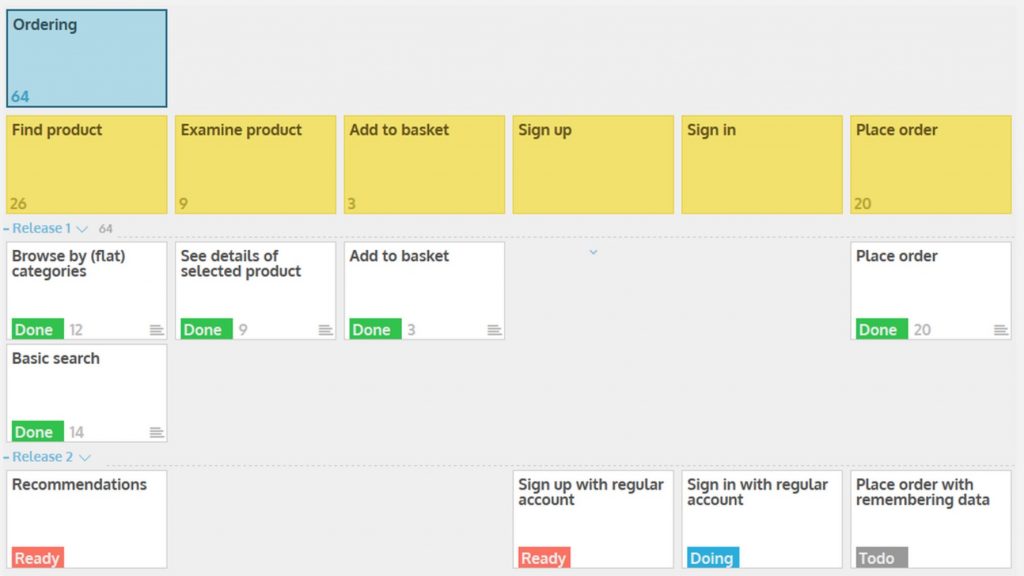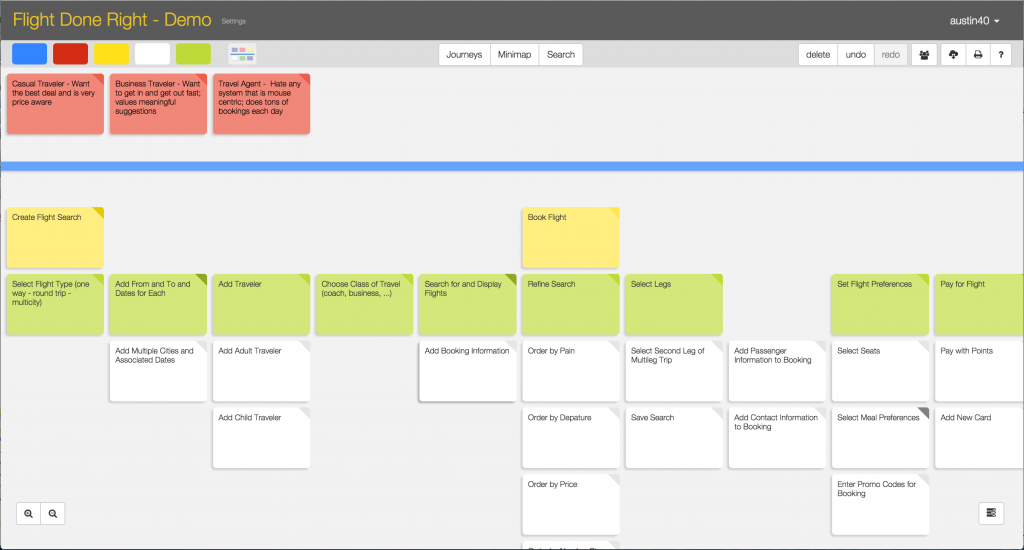As I wrote previously in this blog, story maps help teams identify the Minimum Viable Product (MVP) in a highly visual and collaborative way. Both physical and digital story maps provide these benefits, but which is the best fit for your team?
Let’s check out the advantages and drawbacks of each approach.
Physical Story Maps

Advantages
- Easy to get started – All you need are a couple different colors of sticky notes.
- Everyone can participate – Don’t have to worry about licenses or edit rights.
- Easy to update – Quickly adapt as new ideas emerge. Remove a card, add one, or move it up or down to reflect a change in priority.
- Great visualization – View the entire story map at once, no scrolling necessary.
- Information radiator – Leave it up and the map serves as a reference point for the team as it begins development and for others in the organization to see the customer journey and Minimum Viable Product (MVP).
Disadvantages
- Requires a lot of wall space – Hard to come by in many offices!
- Not well suited for remote participation – Challenging to follow along and contribute if all team members are not in the same room.
- Double entry – Most teams will end up typing the information captured on the story map into a backlog management tool, such as JIRA, for easier use during Sprints.
- Lack of audit trail – What happens if one of the sticky notes falls on the floor?
Digital Story Maps
Advantages
- Allows remote participation – Great option for distributed teams. Allows remote participants to follow along and contribute.
- Doesn’t require physical space – Get started without a dedicated team area.
- Capture additional story artifacts – Attach additional artifacts, such as links, documents, and photos, directly to specific cards in the story map.
- Integrate with Agile and PM tools – With paid accounts, most offer integrations, cutting down the time to get epics, stories, and estimates from the story map into your backlog.
- Lots of options, free to try – Many tools (StoriesOnBoard, Cardboard, Agile User Story Map JIRA plugin, Feature Map, Realtime Board), most offering free trials.
Disadvantages
- Monthly license fee – Likely need to purchase a monthly license, for one or more team members, to access the most useful features.
- One editor at a time works best – Sometimes tricky to have multiple people editing a map at the same time.
- Data may be stored externally – Companies with strict security requirements may not permit using the desired tool.
- Harder to maintain focus – Anyone joining via computer will have more distractions popping up. Further, since story mapping often occurs over several hours to several days, it can be challenging to follow along remotely for that long.
Based on my experience, if your team is collocated and has the space, I strongly recommend creating a physical story map. It’s just more fun and the best way to get the whole team involved. That said, with all the tools currently available, distributed teams now have decent options for creating story maps digitally.

